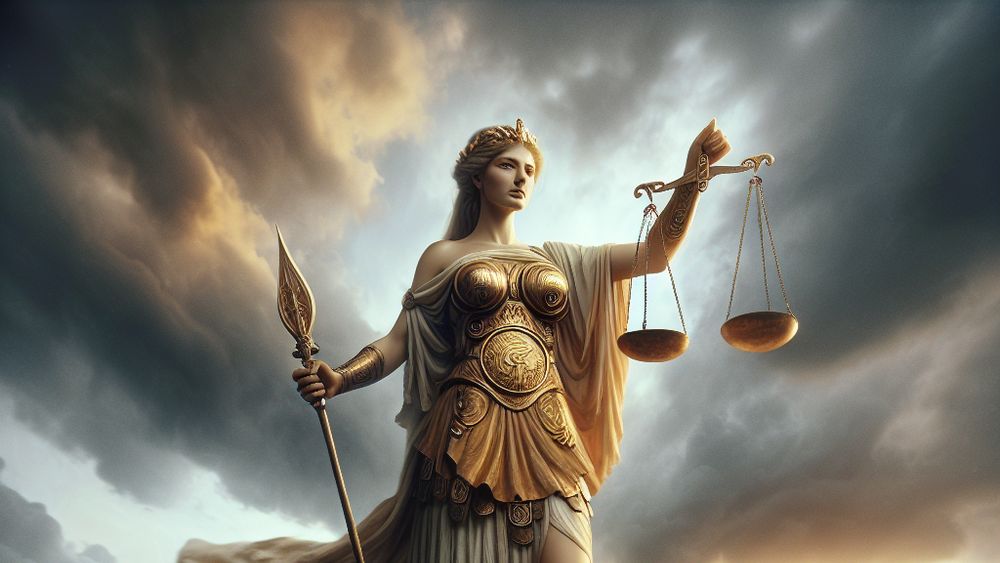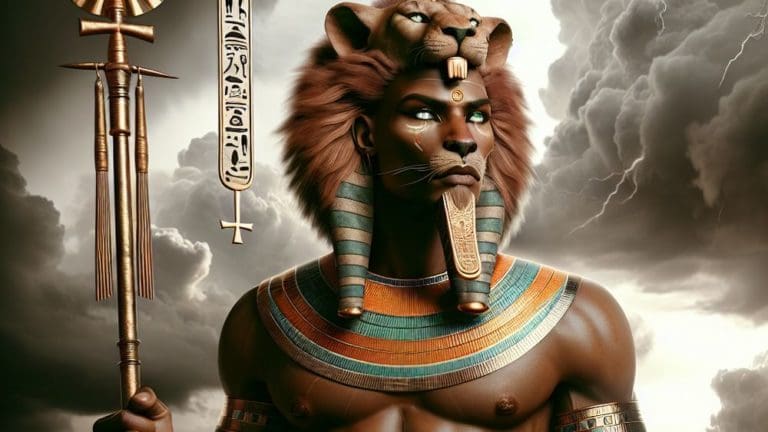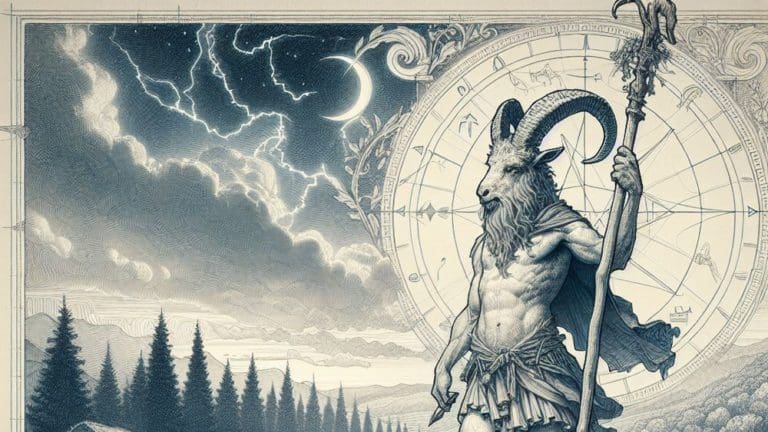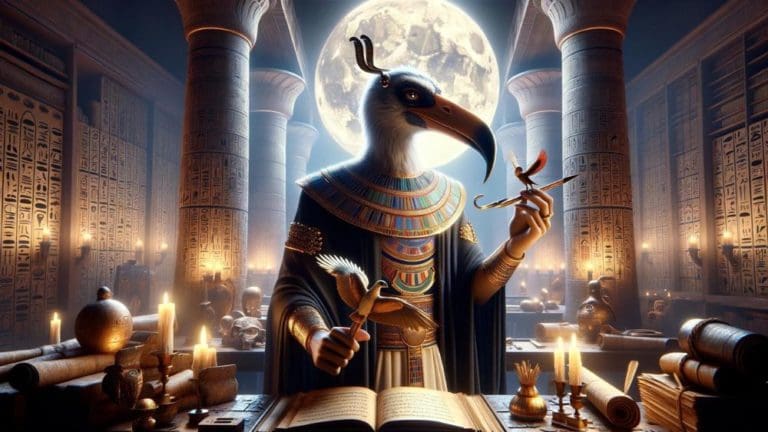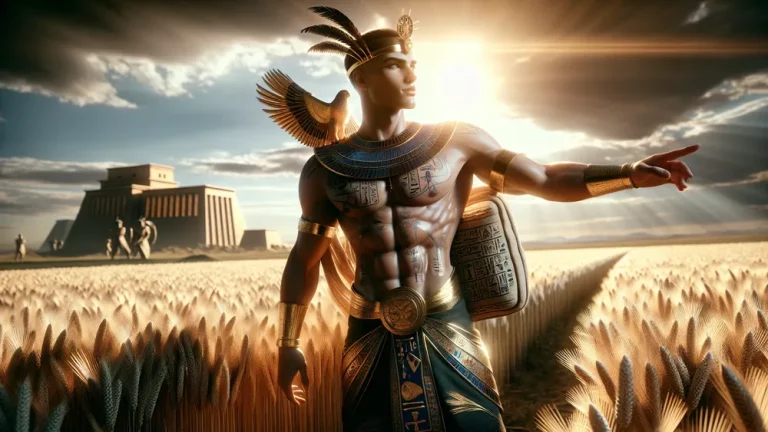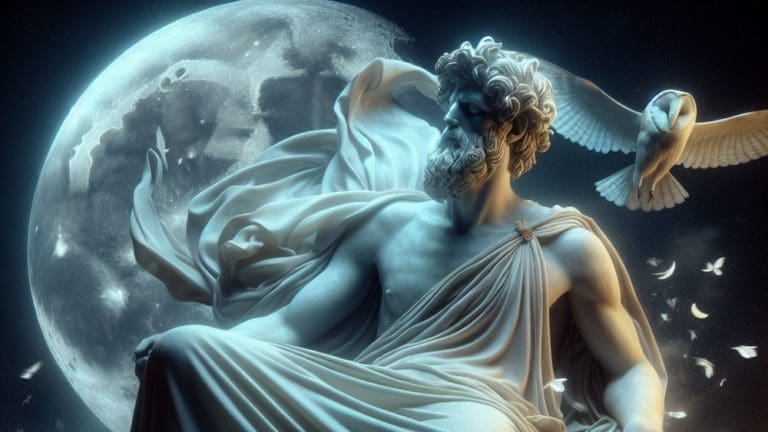Nemesis: Greek Goddess Of Retribution and Vengeance
Nemesis: Greek Goddess Of Retribution and Vengeance
Diving into the ancient world, where gods and goddesses ruled over the realms of human emotions and natural phenomena, the name Nemesis stands tall. She is the embodiment of divine retribution, balancing the scales against those who succumb to hubris. Her story is as captivating as it is complex, weaving through the fabric of Greek mythology with a sense of inevitable justice.
Key Points:
- Nemesis is the Greek goddess of retribution and vengeance.
- Nemesis ensures balance and justice by distributing fortune.
- She is depicted as the daughter of Nyx, the night goddess.
- Nemesis has a complex relationship with Zeus, resisting his advances.
- Symbols associated with Nemesis include scales, sword, and wheel.
- Nemesis plays a role in myths like Narcissus and the Battle of Marathon.
- Worship of Nemesis was widespread in ancient Greece.
Nemesis, the dark-winged goddess, brings a fascinating dynamic to the pantheon. Her role resonates through tales of vengeance and justice, serving as a mirror to the actions of mortals and gods alike. By focusing on Nemesis, we unlock a rich narrative that has influenced art, literature, and culture through the ages.
The Origins and Family of Nemesis
The origins of Nemesis are as mysterious as the night itself, shrouded in the mists of ancient Greek mythology. She is often depicted as a force of divine balance, ensuring that no individual possesses too much fortune or misfortune.
The Etymology of Nemesis
The name Nemesis is rich in meaning, offering insights into her complex nature. It is derived from the Greek word nemein, meaning to give what is due. This origin points to her role as the distributor of fortune, ensuring that neither happiness nor sorrow overwhelms the humans.
- Derived meanings:
- Distributor of fortune
- Bringer of balance
- Enforcer of justice
Embrace the concept of balance in your life to ensure that neither extreme happiness nor deep sorrow overwhelms you.
Nemesis’ Divine Lineage
When it comes to Nemesis’ divine lineage, the tales vary, but a few figures are consistently mentioned. According to Hesiod, Nemesis is the daughter of Nyx, the night personified, without any mention of a father, highlighting her origins in darkness and mystery.

| Parent | Relation |
|---|---|
| Nyx | Mother |
| Erebus | Presumed father in some tales |
Nemesis and Zeus: A Complex Relationship
Nemesis and Zeus share a relationship that is unique and filled with tension. Despite being the king of the gods, Zeus found himself unable to easily win over Nemesis. Her resistance to his advances underscores her role as a goddess of retribution who stands firm in her principles.
The complexity of their relationship adds layers to the narrative, showcasing the limits of power and influence even among the most mighty of the gods. It illustrates Nemesis’ unyielding stance on justice and retribution, unaffected by the desires of Zeus.
Embrace and uphold your principles with unwavering determination, like Nemesis in her stance against the desires of even the mightiest powers.
The Iconography and Worship of Nemesis
The worship of Nemesis was widespread in Greece, with her iconography reflecting her role as a goddess of retribution and balance. Temples dedicated to her stood as beacons of divine justice, attracting those seeking redress for wrongs.
Symbols Associated with Nemesis
The symbols associated with Nemesis are deeply emblematic of her attributes and the balance she upholds. Each symbol has a specific meaning, adding layers to her representation in ancient art and worship.
- List of symbols:
- Scales: Representing balance and justiceSword: Symbol of retribution and vengeanceWheel: Denoting the cycle of fortune and fate
The Cult and Temples Dedicated to Nemesis
The temples and cults dedicated to Nemesis are nothing short of fascinating. In the ancient world, Nemesis was revered as the dispenser of fortune, ensuring that neither human hubris nor divine wrath went unchecked.
One especially intriguing spot was her sanctuary in Rhamnous, a small town in Attica. This was not just any spot. It was thought to be chosen by Nemesis herself, as a symbol of her influence and retribution powers.
- Rhamnous in Attica
- Sanctuary in Smyrna
- The Temple near Thermos
Each of these sites had a special vibe, combining awe with a dose of eerie respect for the goddess’s power to balance fortune and justice.
Nemesis in Ancient Art and Sculpture
Nemesis, often depicted with a set of scales, has been a popular subject in ancient art and sculpture. These symbols represented her role as the distributor of fortune and justice, establishing a powerful imagery of balance and retribution.
Artists were especially keen on depicting her with a wheel, representing the unpredictable nature of fortune – how quickly one’s fate can turn under her watchful gaze. This imagery served as a vivid reminder of her role in mythology: the ultimate enforcer of balance.
Nemesis embodies the concept of balance and justice in ancient art, symbolized through scales and a wheel, highlighting the swift and unpredictable nature of fate under her influence.
Nemesis in Mythology and Literature
Nemesis holds a special place in Greek mythology, vital as a force of divine retribution against arrogance and hubris. From epic tales to tragedies, her presence is woven into the fabric of stories highlighting the pursuit of justice and the consequences of human folly.

The Story of Nemesis and Narcissus
The story of Nemesis and Narcissus is a captivating tale of justice and retribution. Nemesis, spotting the young Narcissus’s hubris, decided it was time for a lesson in humility.
- Narcissus’s hubris: He rejected those who loved him.
- Nemesis’s intervention: She led him to a pool.
- The tragic end: Narcissus fell in love with his own reflection, unable to leave, eventually leading to his demise.
This tale not only showcases Nemesis’s power but also serves as a stark warning against the dangers of excessive pride and self-obsession.
Nemesis’ Role in the Battle of Marathon
During the historic Battle of Marathon, Nemesis played a uniquely motivational role. It’s said that she inspired the Greeks, reminding them of the justice their cause fought for and the retribution awaiting the Persians for their hubris. This influence underscored her ability to sway the tide of human affairs, serving justice on the battlefield.
Nemesis and the Concept of Divine Retribution
Nemesis embodies the concept of divine retribution in Greek mythology. Her very name to this day symbolizes the downfall of those who succumb to arrogance or hubris. With a strict moral compass, she ensured that no act of hubris, either by gods or mortals, went unchecked, thus maintaining the balance between fortune and justice.
Nemesis serves as a symbol of consequences for pride and arrogance, ensuring a balance between fortune and justice in Greek mythology.
List of All Greek Mythology Gods
For those of you eager to dive deeper into the realm of Greek deities, here’s an awesome link to quench your curiosity. It’s a comprehensive list of all the Greek gods and goddesses, neatly packed with their stories and the roles they played in the vast tapestry of mythology. Have fun exploring!
FAQs
1. How is Nemesis related to other Greek gods and goddesses?
Nemesis is intricately woven into the tapestry of Greek mythology. As the daughter of Nyx, the night goddess, without a father or sometimes considered the daughter of Oceanus, she represents the divine balance of justice and retribution. Her role intertwines with many gods and goddesses, emphasizing her integral part in mythological narratives.
2. What are the most famous myths involving Nemesis?
The most famous myths involving Nemesis underscore her role as the goddess of retribution. One especially notable story is her interaction with Narcissus, where she responds to his arrogance by leading him to fall in love with his own reflection. This tale is a profound example of how Nemesis restores balance and punishes hubris.
3. How was Nemesis worshipped in ancient Greece?
Nemesis was worshipped in ancient Greece as a powerful force of justice and balance. Her main sanctuary was in Rhamnous, Attica, where she was celebrated with festivals and offerings, showcasing her importance in Grecian worship. This devotion illustrates the ancient Greeks’ respect for the concepts of retribution and divine influence.
4. Does Nemesis have a Roman equivalent?
Nemesis does indeed have a Roman equivalent named Invidia, who personifies jealousy and envy, aspects closely associated with Nemesis’ Greek role of doling out retribution for evil deeds and undeserved good fortune. This parallel underscores the similarity in how ancient cultures perceived divine justice.
Conclusion
Diving deep into the world of Nemesis and her role in Greek mythology is like unraveling a complex tapestry woven with themes of justice, retribution, and balance. She isn’t just another figure among the pantheon but a pivotal element representing the ancient Greeks’ understanding of moral equilibrium. Exploring her myths, worship, and artwork reveals much about the societal values of the time and the enduring legacy of mythological narratives. So next time you come across a tale of Nemesis, remember, it’s all about keeping the universe in check – a pretty awesome responsibility, if you ask me. Catch you on the flip side, history buffs!
Warm wishes and may you always find balance in your adventures, Cedric

